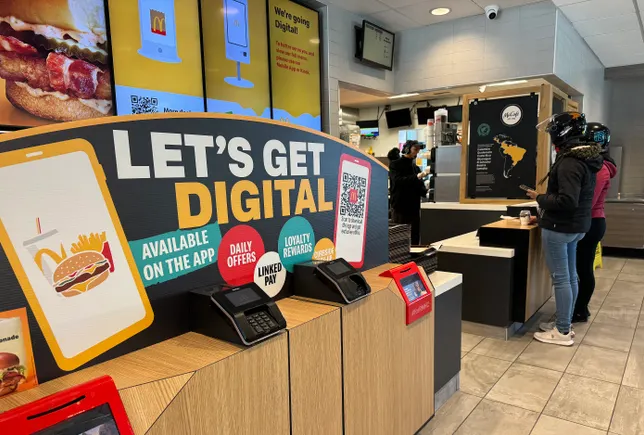Introduction:
For the successful sale of product or services, marketing plays an important role, with one of the main marketing strategies being B2B marketing.B2B (Business-to-Business) as the name suggests, is marketing is which business sells their product or service to other businesses.B2B marketing strategies are important for business-to-business organizations to foster successful and long-lasting relationships. To be top-notch in B2B,
you need an amazing marketing team. They got to be quick, smart, flexible, and always rely on data. That’s the winning formula. As statistics says that76% of B2B companies have a formal marketing plan.

So, in this article we discuss most 7 elements of B2B marketing teams, highlighting their significance and providing detailed insights.
7 Elements of B2B marketing teams
1.Define clear business goals
So, it’s like baking a cake, you need to know what kind of cake you need before you gather the ingredients and start mixing. Similarly, in B2B marketing, you need to have a clear idea of your business goals before you can craft your marketing strategy to achieve them.
Setting clear business objectives helps the marketing team understand what they are working towards. Sure, marketing goals are good, but what really matters are the results for the business. Like, getting more people to the website is a marketing goal, but boosting sales is what counts for the business.
Once you understand what you want marketing to achieve, you can then figure out the steps to make it happen.
2.Identify your target audience
Understanding your target audience is important in b2b marketing strategies. Researching and documenting who they are is key in B2B marketing.
One effective method for this is persona development, which creates a document featuring hypothetical people who reflect your ideal customer. Focus on their psychographics—such as fears, motivations, beliefs, and aspirations—rather than just demographics like age or gender. It is found that writing narrative or mini biographies for these personas can bring them to life and help you remember them better.
These personas help you identify your customers’ pain points and inform your overall strategy, including crafting tailored marketing messages for different audience segments.
It’s also important to talk to real people who matches your target audience criteria, including the current and former customer, as well as people in your networks. While it could be tough conversation, you can learn valuable insights from customers who didn’t choose to work with you.
CMI’s survey found around 75 percent of all respondents rely on the sales team and website analytics. Yet, the most successful marketers were more likely to use original research, customer interviews, and panels as techniques for gathering intelligence about the audience.
3.Map out the B2B buyer’s journey
Once you have a solid understanding of your audience, now you need to envision the path they take towards choosing a business. This is called path to purchase or buyers’ journey, and it includes 5 phases.
- Needs Awareness
- Research
- Consideration and Comparison
- Procurement
- Loyalty
In B2B, there might be more steps because multiple people are usually involved in the decision. The B2B buying process can move through different levels of authority. As marketers, we need to know who’s influencing the decision and who’s making the final call. Then, we can tailor our marketing efforts accordingly.
4.Identify key B2B marketing tactics
Now that you know who your audience is and how they decide, it’s time to figure out how to catch their attention and persuade them to pick you.
In addition to buyers’ journey, sales and marketing funnels are useful in B2B marketing strategies. These funnels outline various marketing campaigns and content customized for each stage of buyer’s journey. At the top, prospects are learning and looking for solutions. In the middle, they’re comparing options. And at the bottom, they’re ready to buy.
But here is the thing, don’t get stuck thinking that certain marketing tools are meant for certain stages. It’s not about the tool, it’s about the message we deliver. It’s the content that matters, not how it’s delivered.
As you pick marketing tactics, ask yourself:
- Does this fit the buyer’s journey?
- Where does it fit in our sales funnel?
- Will this help our prospects?
- What do we want people to do next?
Discuss ideas and look for gaps in your plan. Maybe your website needs a page for a new service, or an info blog series could help explain its benefits. Decide if promoting on social media or driving traffic to your new page works best.
Once you’ve got your message and tactics sorted, it’s time to put it all together into a solid plan.
5.Connect the dots for an integrated B2B marketing
Now, we split our clients marketing plan into four parts: Owned, earned (Public Relations), Shared (social media), and Paid Mediate the real power comes when they work together, even though these are viewed as separate practices. By working together they all focus on same goals and create a stronger B2B marketing mix for better results.

Before you bring together all the different marketing efforts in your plan, you need to make sure everyone involved is on the same page. This includes your internal marketing team, sales team, public relations, leadership, digital/IT staff, and agency partners. If you’re also working on recruitment marketing or corporate culture, you might need to involve human resources and management. When everyone works in separate silos, your marketing efforts won’t reach their full potential. So, it’s crucial to align everyone’s efforts and goals.
When it’s time to put your marketing plans into action, don’t just create content or post randomly. Instead, go back to your business goals and audience research. Use these to figure out the best tactics and create a well-rounded marketing strategy around them.
6.Make an editorial calendar
In B2B strategies there are a lot of moving parts, so it’s important to create a schedule to track everything. Here’s where the marketing calendar comes, it clearly defines when the campaign starts and end, when events or product releases happen, and deadlines for content creation and publishing. These keeps everyone in track throughout the year. You can use various tools or even a simple excel spreadsheet to create it.
Once your plan is on the calendar, expect changes. Things rarely go exactly as planned. Stay flexible and update the calendar as needed, but make sure someone is responsible for keeping it up to date to avoid confusion.
7.Develop a measurement strategy
The final element of B2B marketing strategy is crucial to defining your success. To know if your plan is working, you need to track your progress. Regular reports using tools like Google Analytics are essential. Share these reports with your sales and marketing teams and other key members of your company.
It’s important to connect your metrics to your business goals. At Element, we use key performance indicators (KPIs) that directly relate to our clients’ big-picture outcomes. For example, instead of just reporting website traffic, we might focus on engagement metrics for specific content, like how deeply people are reading articles on certain topics.
Good marketing reports not only answer questions but also prompt new ones. They help you adjust your strategy and provide insights on where to focus next. That’s why it’s crucial to keep updating your marketing calendar based on what you learn from your reports.
Conclusion
In conclusion, B2B marketing teams and strategies plays a vital role in successful business organization following the seven key elements outlined above, businesses can create a comprehensive approach that drives results and fosters long-term success.B2B marketing teams are encouraged to embrace and implement B2B marketing strategies wholeheartedly. Recognizing the dynamic landscape of business-to-business interactions, it’s imperative for teams to harness the power of targeted campaigns, personalized content, and strategic approaches tailored to the unique needs of their audience.












Leave a Reply